![[Digital logo]](../../IMAGES/DIGITAL-LOGO.GIF)
![[HR]](../../IMAGES/REDBAR.GIF)
![[Digital logo]](../../IMAGES/DIGITAL-LOGO.GIF)
![[HR]](../../IMAGES/REDBAR.GIF)
When you specify the /USAGE qualifier, ANALYZE/DISK_STRUCTURE creates a disk usage accounting file. The first record of this file, the identification record, contains a summary of the disk and volume characteristics. The identification record is followed by many file summary records, one record for each file on the disk. Each file summary record contains the owner, size, and name of a file.
The identification record is characterized by the type code USG$K_IDENT in the USG$B_TYPE field of the record. Table E-1 contains a description of all the fields in this record.
| Field | Meaning |
|---|---|
| USG$L_SERIALNUM | Serial number of the volume. This is an octal longword value. |
| USG$T_STRUCNAM | Volume set name (if the volume is part of a volume set). For a Files-11 Structure Level 1 volume, this field contains binary zeros; for a Files-11 Structure Level 2 volume that is not part of a volume set, this field contains spaces. The length of this field is USG$S_STRUCNAME. |
| USG$T_VOLNAME | Volume name of relative volume 1. The length of this field is USG$S_VOLNAME. |
| USG$T_OWNERNAME | Volume owner name. The length of this field is USG$S_OWNERNAME. |
| USG$T_FORMAT | Volume format type. For a Files-11 Structure Level 1 volume, this field contains "DECFILE11A"; for a Files-11 Structure Level 2 volume, this field contains "DECFILE11B". The length of this field is USG$S_FORMAT. |
| USG$Q_TIME | Quadword system time when this usage file was created. The length of this field is USG$S_TIME. |
Each file summary record is characterized by the type code USG$K_FILE in the USG$B_TYPE field of the record. Table E-2 contains a description of all the fields in these records.
| Field | Meaning |
|---|---|
| USG$L_FILEOWNER | File owner UIC. This can be considered as a single longword value or as two word values (USG$W_UICMEMBER and USG$W_UICGROUP). |
| USG$W_UICMEMBER | The member field of the file owner UIC. This is an octal word value. |
| USG$W_UICGROUP | The group field of the file owner UIC. This is an octal word value. |
| USG$L_ALLOCATED | Number of blocks allocated to the file, including file headers. This is a decimal longword value. |
| USG$L_USED | Number of blocks used, up to and including the end-of-file block. This is a decimal longword value. |
| USG$W_DIR_LEN | Length of the directory string portion of USG$T_FILESPEC, including the brackets. This is a decimal word value. |
| USG$W_SPEC_LEN | Length of the complete file specification in USG$T_FILESPEC. This is a decimal word value. |
| USG$T_FILESPEC |
File specification, in the following format:
[dir]nam.typ;ver This field is of variable length. A file that has more than one directory entry is listed under the first file specification found. A lost file has an empty directory string "[]" and the file name is taken from the file header. In some cases this information does not exist; you must take this into consideration when you write application programs to process the usage file. The length of this field is USG$S_FILESPEC. |
The symbolic names referenced in both the identification and the file summary records are defined in the system definition macro $USGDEF. The length of the identification record is USG$K_IDENT_LEN. The length of a file summary record is USG$K_FILE_LEN.
This appendix describes the format of the auditing messages written to the security auditing log file. The default audit log file SECURITY.AUDIT$JOURNAL is created by default in the SYS$COMMON:[SYSMGR] directory.
Each security audit record consists of a header packet followed by one or more data packets, as shown in Figure F-1. The number of data packets depends on the type of information being sent. This appendix describes the format of the audit header and its data packets as well as the contents of the data packets.
Figure F-1 Format of a Security Audit Message
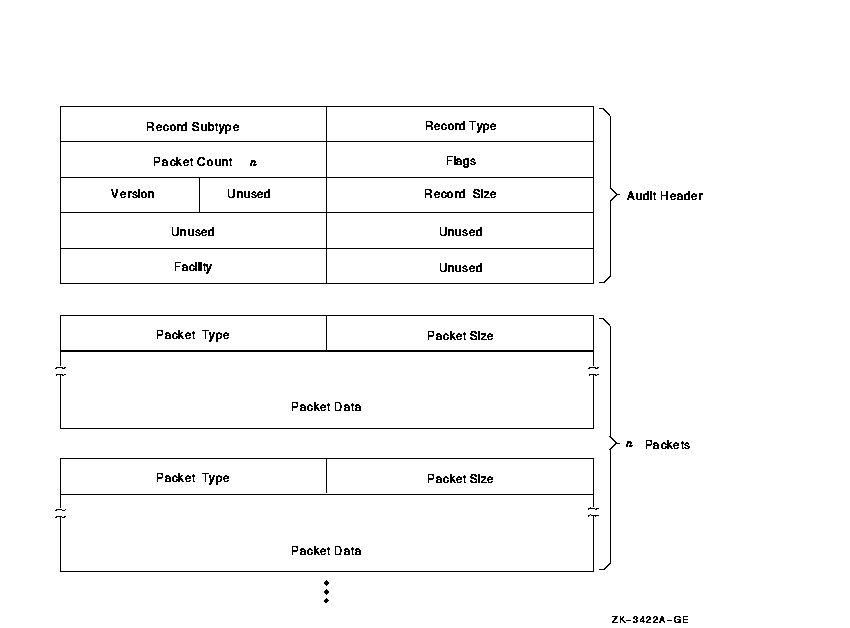
F.1 Audit Header Packet
Table F-1 describes the fields contained in the audit header
packet, illustrated in Figure F-2.
Figure F-2 Audit Header Packet Format

Symbols representing the types or subtypes of security events are listed in Table F-2. For each audit event record type defined by NSA$W_RECORD_TYPE, there is a record subtype defined by the symbol NSA$W_RECORD_SUBTYPE, which further defines the event.
Table F-3 identifies any flags associated with the audited event.
The symbol NSA$K_MSG_HDR_LENGTH defines the current size of the message header (in bytes).
| Field | Symbolic Offset | Contents |
|---|---|---|
| Type | NSA$W_RECORD_TYPE | Indicates the type of event that has occurred. See Table F-2 for details. |
| Subtype | NSA$W_RECORD_SUBTYPE | Further defines the type of event that has occurred. See Table F-2 for details. |
| Flags | NSA$W_FLAGS | Identifies any flags associated with the audited event. See Table F-3 for details. Reserved to Digital. (Word) |
| Packet count | NSA$W_PACKET_COUNT | Number of data packets in the audit record. (Word) |
| Record size | NSA$W_RECORD_SIZE | Total size of the audit message; the size represents the header packet plus all its data packets. (Word) |
| Version | NSA$C_VERSION_3 | Indicates the version of the security auditing facility. The symbol NSA$C_VERSION_3 indicates the current version. (Byte) |
| Facility | NSA$W_FACILITY | The facility code for the generated event. By default, this field is zero, indicating a system-generated event. (Word) |
When you enter subtypes, do not include a prefix, as shown in Table F-2.
| Symbol of Event Type | Meaning |
|---|---|
| NSA$C_MSG_AUDIT | Systemwide change to auditing |
|
Subtype and Meaning
ALARM_STATE AUDIT_DISABLED AUDIT_ENABLED AUDIT_INITIATE AUDIT_LOG_FIRST AUDIT_LOG_FINAL AUDIT_STATE AUDIT_TERMINATE SNAPSHOT_ABORT SNAPSHOT_ACCESS SNAPSHOT_SAVE SNAPSHOT_STARTUP |
Events enabled as alarms Audit events disabled Audit events enabled Audit server startup First entry in audit log (backward link) Final entry in audit log (forward link) Events enabled as audits Audit server shutdown System snapshot attempt has aborted Snapshot file access/deaccess System snapshot save in progress System booted from a snapshot file |
| NSA$C_MSG_BREAKIN | Break-in attempt detected |
|
Subtype and Meaning
BATCH DETACHED DIALUP LOCAL NETWORK REMOTE SUBPROCESS |
Batch process Detached process Dialup interactive process Local interactive process Network server task Interactive process from another network node Subprocess |
| NSA$C_MSG_CONNECTION | Logical link connection or termination |
|
Subtype and Meaning
CNX_ABORT CNX_ACCEPT CNX_DECNET_CREATE CNX_DECNET_DELETE CNX_DISCONNECT CNX_INC_ABORT CNX_INC_ACCEPT CNX_INC_DISCONNECT CNX_INC_REJECT CNX_INC_REQUEST CNX_IPC_CLOSE CNX_IPC_OPEN CNX_REJECT CNX_REQUEST |
Connection aborted Connection accepted DECnet logical link created DECnet logical link disconnected Connection disconnected Incoming connection request aborted Incoming connection request accepted Incoming connection disconnected Incoming connection request rejected Incoming connection request Interprocess communication association closed Interprocess communication association opened Connection rejected Connection requested |
| NSA$C_MSG_INSTALL | Use of the Install utility (INSTALL) |
|
Subtype and Meaning
INSTALL_ADD INSTALL_REMOVE |
Known image installed Known image deleted |
| NSA$C_MSG_LOGFAIL | Login failure |
|
Subtype and Meaning
See subtypes for NSA$C_MSG_BREAKIN |
|
| NSA$C_MSG_LOGIN | Successful login |
|
Subtype and Meaning
See subtypes for NSA$C_MSG_BREAKIN |
|
| NSA$C_MSG_LOGOUT | Successful logout |
|
Subtype and Meaning
See subtypes for NSA$C_MSG_BREAKIN |
|
| NSA$C_MSG_MOUNT | Volume mount or dismount |
|
Subtype and Meaning
VOL_DISMOUNT VOL_MOUNT |
Volume dismount Volume mount |
| NSA$C_MSG_NCP | Modification to network configuration database |
|
Subtype and Meaning
NCP_COMMAND |
Network Control Program (NCP) command issued |
| NSA$C_MSG_NETPROXY | Modification to network proxy database |
|
Subtype and Meaning
NETPROXY_ADD NETPROXY_DELETE NETPROXY_MODIFY |
Record added to network proxy authorization file Record removed from network proxy authorization file Record modified in network proxy authorization file |
| NSA$C_MSG_OBJ_ACCESS | Object access attempted |
|
Subtype and Meaning
OBJ_ACCESS |
Access attempted to create, delete, or deaccess an object |
| NSA$C_MSG_OBJ_CREATE | Object creation attempted |
|
Subtype and Meaning
OBJ_CREATE |
Access attempted to create an object |
| NSA$C_MSG_OBJ_DEACCESS | Object deaccessed |
|
Subtype and Meaning
OBJ_DEACCESS |
Attempt to complete access to an object |
| NSA$C_MSG_OBJ_DELETE | Object deletion attempted |
|
Subtype and Meaning
OBJ_DELETE |
Object deletion attempted |
| NSA$C_MSG_PROCESS | Process controlled through a system service |
|
Subtype and Meaning
PRC_CANWAK PRC_CREPRC PRC_DELPRC PRC_FORCEX PRC_GETJPI PRC_GRANTID PRC_RESUME PRC_REVOKID PRC_SCHDWK PRC_SETPRI PRC_SIGPRC PRC_SUSPND PRC_TERM PRC_WAKE |
Process wakeup canceled Process created Process deleted Process exit forced Process information gathered Process identifier granted Process resumed Process identifier revoked Process wakeup scheduled Process priority altered Process exception issued Process suspended Process termination notification requested Process wakeup issued |
| NSA$C_MSG_PRVAUD | Use of privilege |
|
Subtype and Meaning
PRVAUD_FAILURE PRVAUD_SUCCESS |
Unsuccessful use of privilege Successful use of privilege |
| NSA$C_MSG_RIGHTSDB | Modification to the rights database |
|
Subtype and Meaning
RDB_ADD_ID RDB_CREATE RDB_GRANT_ID RDB_MOD_HOLDER RDB_MOD_ID RDB_REM_ID RDB_REVOKE_ID |
Identifier added to rights database Rights database created Identifier granted to user List of identifier holders modified Identifier name or attributes modified Identifier removed from rights database Identifier taken away from user |
| NSA$C_MSG_SYSGEN | Use of the System Generation utility (SYSGEN) |
|
Subtype and Meaning
SYSGEN_SET |
System Generation utility (SYSGEN) parameter modified |
| NSA$C_MSG_SYSTIME | Modification to system time |
|
Subtype and Meaning
SYSTIM_SET SYSTIM_CAL |
System time set System time calibrated |
| NSA$C_MSG_SYSUAF | Modification to system user authorization file (SYSUAF) |
|
Subtype and Meaning
SYSUAF_ADD SYSUAF_COPY SYSUAF_DELETE SYSUAF_MODIFY SYSUAF_RENAME |
Record added to system user authorization file Record copied in system user authorization file Record deleted from system user authorization file Record modified in system user authorization file Record renamed in system user authorization file |
| Symbol | Meaning |
|---|---|
| NSA$M_ACL | Event generated by an alarm access control entry (ACE) or an audit ACE. |
| NSA$M_ALARM | Event is a security alarm. |
| NSA$M_AUDIT | Event is a security audit. |
| NSA$M_FLUSH | Event forced the audit server to write all buffered event messages to the audit log file. |
| NSA$M_FOREIGN | Event occurred outside of the system trusted computing base. |
| NSA$M_MANDATORY | Event resulted from a mandatory process audit. |
Note
All other flags besides those listed in the table are reserved by Digital.
Figure F-3 illustrates the format of an audit data packet. NSA$K_PKT_HDR_LENGTH defines the current size of each packet header (in bytes).
Note that audit data packets do not appear in any predefined order within an event message, and packet types can appear more than once throughout the event message.
For examples of the types of data appearing in different event messages, see the appendix of alarm messages in the OpenVMS Guide to System Security.
Figure F-3 Audit Data Packet Format

Table F-4 describes the fields contained in these packets.
| Field | Symbolic Offset | Contents |
|---|---|---|
| Packet size | NSA$W_PACKET_SIZE | Indicates the size of the data packet. (Word) |
| Packet type | NSA$W_PACKET_TYPE | Indicates the type of data in the packet, as described in Table F-5. |
| Packet data | NSA$R_PACKET_DATA | Variable length field containing the packet data. |
Table F-5 describes the types of data in audit packets.
| Symbol | Packet Contents |
|---|---|
| NSA$_ACCESS_DESIRED | Access requested or granted to the object as defined by $ARMDEF (Longword) |
| NSA$_ACCESS_MODE | Access mode of the process (Byte) |
| NSA$_ACCOUNT | Account name associated with the process (String of 1-32 characters) |
| NSA$_ALARM_NAME | Name of the user (or the security class operators terminal) to receive the record (String of 1-32 characters) |
| NSA$_ASSOCIATION_NAME | Interprocess communication (IPC) association name (String of 1-256 characters) |
| NSA$_AUDIT_FLAGS | Bit mask of enabled or disabled events. This is reserved to Digital. (40-byte record) (String of 1-65 characters) |
| NSA$_AUDIT_NAME | Journal file to receive the audit record (String of 1-65 characters) |
| NSA$_COMMAND_LINE | Command line the user entered (String of 1-2048 characters) |
| NSA$_CONNECTION_ID | Interprocess communication (IPC) connection identification (Longword) |
| NSA$_DECNET_LINK_ID | DECnet logical link identification (Longword) |
| NSA$_DECNET_OBJECT_NAME | DECnet object name (String of 1-16 characters) |
| NSA$_DECNET_OBJECT_NUMBER | DECnet object number (Longword) |
| NSA$_DEFAULT_USERNAME | Default local user name for incoming network proxy requests (String of 1-32 characters) |
| NSA$_DEVICE_NAME | Device name where the volume resides (String of 1-64 characters) |
| NSA$_DIRECTORY_ENTRY | Directory entry associated with file system operation (Longword) |
| NSA$_DIRECTORY_ID | Directory file identification (Array of 3 words) |
| NSA$_DIRECTORY_NAME | Directory file name |
| NSA$_DISMOUNT_FLAGS | The $DMTDEF macro in STARLET defines the dismount flags; each flag is one quadword. |
| NSA$_EFC_NAME | Event flag cluster name (String of 1-16 characters) |
| NSA$_EVENT_FACILITY | Facility code for the generated event (Word) |
| NSA$_FIELD_NAME | Name of the field being modified. This is used in combination with NSA$_ORIGINAL_DATA and NSA$_NEW_DATA. (String of 1-256 characters) |
| NSA$_FILE_ID | File identification (Array of words) |
| NSA$_FINAL_STATUS | Status (successful or unsuccessful) causing the auditing facility to be invoked (Longword) |
| NSA$_HOLDER_NAME | Name of user holding the identifier (String of 1-32 characters) |
| NSA$_HOLDER_OWNER | Owner (UIC) of holder (Longword) |
| NSA$_ID_ATTRIBUTES | Attributes of the identifier, which are defined by the $KGBDEF macro in STARLET (Longword) |
| NSA$_IDENTIFIERS_USED | Identifiers (from the access control entry (ACE) granting access) used to gain access to the object (Array of longwords) |
| NSA$_ID_NAME | Name of the identifier (String of 1-32 characters) |
| NSA$_ID_NEW_ATTRIBUTES | New attributes of the identifier, which are defined by the $KGBDEF macro in STARLET (Longword) |
| NSA$_ID_NEW_NAME | New name of the identifier (String of 1-32 characters) |
| NSA$_ID_NEW_VALUE | New value of the identifier (Longword) |
| NSA$_ID_VALUE | Value of the identifier (Longword) |
| NSA$_ID_VALUE_ASCII | Identification value provided by $IDTOASC (Longword) |
| NSA$_IMAGE_NAME | Name of the image being executed when the event took place (String of 1-1024 characters) |
| NSA$_INSTALL_FILE | The name of the installed file (String of 1-255 characters) |
| NSA$_INSTALL_FLAGS | The INSTALL flags correspond to qualifiers for the Install utility (for example, NSA$M_INS_EXECUTE_ONLY); each flag is one longword. |
| NSA$_LNM_PARENT_NAME | Name of the parent logical name table (String of 1-31 characters) |
| NSA$_LNM_TABLE_NAME | Name of the logical name table (String of 1-31 characters) |
| NSA$_LOCAL_USERNAME | User name of the account available for incoming network proxy requests (String of 1-32 characters) |
| NSA$_LOGICAL_NAME | Logical name associated with the device (String of 1-255 characters) |
| NSA$_MAILBOX_UNIT | Mailbox unit number (Longword) |
| NSA$_MATCHING_ACE | ACE granting or denying access (Array of bytes) |
| NSA$_MESSAGE | Associated message code; see NSA$_MSGFILNAM for translation (Longword) |
| NSA$_MOUNT_FLAGS | The MOUNT flags defined by the $MNTDEF macro in STARLET (Longword) |
| NSA$_MSGFILNAM | Message file containing the translation for the message code in NSA$_MESSAGE (String of 1-255 characters) |
| NSA$_NEW_DATA | Contents of the field named in NSA$_FIELD_NAME after the event occurred. NSA$_ORIGINAL_DATA contains the field contents prior to the event. (String of 1-n characters) |
| NSA$_NEW_IMAGE_NAME | Name of the new image (String of 1-1024 characters) |
| NSA$_NEW_OWNER | New process owner (UIC) (Longword) |
| NSA$_NEW_PRIORITY | New process priority (Longword) |
| NSA$_NEW_PRIVILEGES | New privileges (Quadword) |
| NSA$_NEW_PROCESS_ID | New identification of the process (Longword) |
| NSA$_NEW_PROCESS_NAME | New name of the process (String of 1-15 characters) |
| NSA$_NEW_PROCESS_OWNER | New owner (UIC) of the process (Longword) |
| NSA$_NEW_USERNAME | New user name (String of 1-32 characters) |
| NSA$_NOP | Packet in static event list to omit from processing |
| NSA$_OBJECT_CLASS | Object class name, as defined by the system or by the user (String of 1-23 characters) |
| NSA$_OBJECT_MAX_CLASS | The minimum access classification of the object (20-byte record) |
| NSA$_OBJECT_MIN_CLASS | The minimum access classification of the object (20-byte record) |
| NSA$_OBJECT_NAME | Object's name (String of 1-255 characters) |
| NSA$_OBJECT_NAME_2 | Alternate object name; currently applies to file-backed global sections where the alternate name of global section is the file name. (String of 1-255 characters) |
| NSA$_OBJECT_OWNER | UIC or general identifier of the process causing the auditable event (Longword) |
| NSA$_OBJECT_PROTECTION | UIC-based protection of the object (Vector of words or longwords) |
| NSA$_OBJECT_TYPE | Object's type code, as listed in $ACLDEF. (String of 1-23 characters) |
| NSA$_OLD_PRIORITY | Former process priority (Longword) |
| NSA$_OLD_PRIVILEGES | Former privileges (Quadword) |
| NSA$_ORIGINAL_DATA | Contents of the field named in NSA$_FIELD_NAME before the event occurred. NSA$_NEW_DATA contains the field contents following the event. (String of 1-n characters) |
| NSA$_PARAMS_INUSE | Set of parameter values given to the SYSGEN command USE (String of 1-255 characters) |
| NSA$_PARAMS_WRITE | File name for the SYSGEN command WRITE (String of 1-255 characters) |
| NSA$_PARENT_ID | Process identifier (PID) of the parent process; only used when auditing events pertaining to a subprocess (Longword) |
| NSA$_PARENT_NAME | Parent's process name; only used when auditing events pertaining to a subprocess (String of 1-15 characters) |
| NSA$_PARENT_OWNER | Owner (UIC) of the parent process (Longword) |
| NSA$_PARENT_USERNAME | User name associated with the parent process (String of 1-32 characters) |
| NSA$_PASSWORD | Password used in unsuccessful break-in attempt (String of 1-32 characters) |
| NSA$_PRIVILEGES | Privilege mask (Quadword) |
| NSA$_PRIVS_MISSING | Privileges that are lacking (Longword or quadword) |
| NSA$_PRIVS_USED | Privileges used to gain access to the object (Longword or quadword) |
| NSA$_PROCESS_ID | PID of the process causing the auditable event (Longword) |
| NSA$_PROCESS_NAME | Process' name that caused the auditable event (String of 1-15 characters) |
| NSA$_REM_ASSOCIATION_NAME | Interprocess communication (IPC) remote association name (String of 1-256 characters) |
| NSA$_REMOTE_LINK_ID | Remote logical link identification number (Longword) |
| NSA$_REMOTE_NODE_ID | DECnet address of the remote process (Longword) |
| NSA$_REMOTE_NODENAME | DECnet node name of the remote process (String of 1-6 characters) |
| NSA$_REMOTE_USERNAME | User name of the remote process (String of 1-32 characters) |
| NSA$_REQUEST_NUMBER | Request number associated with the system service call (Longword) |
| NSA$_RESOURCE_NAME | Lock resource name (String of 1-32 characters) |
| NSA$_SECTION_NAME | Global section name (String of 1-42 characters) |
| NSA$_SNAPSHOT_BOOTFILE | The name of the snapshot boot file, the saved system image file from which the system just booted (String of 1-255 characters) |
| NSA$_SNAPSHOT_SAVE_FILNAM | The name of the snapshot save file, which is the original location of the snapshot file at the time that the system was saved (String of 1-255 characters) |
| NSA$_SNAPSHOT_TIME | The time the picture of the configuration was taken and saved in the snapshot boot file (Quadword) |
| NSA$_SOURCE_PROCESS_ID | Identification of process originating the request (Longword) |
| NSA$_SUBJECT_CLASS | The current access class of the process causing the auditable event (A 20-byte record) |
| NSA$_SUBJECT_OWNER | Owner (UIC) of the process causing the event (Longword) |
| NSA$_SYSTEM_ID | SCS identification of the cluster node where the event took place (SYSGEN parameter SCSSYSTEMID) (Longword) |
| NSA$_SYSTEM_NAME | System Communication Services (SCS) node name where the event took place (SYSGEN parameter SCSNODE) (String of 1-6 characters) |
| NSA$_SYSTEM_SERVICE_NAME | Name of the system service associated with the event (String of 1-256 characters) |
| NSA$_SYSTIM_NEW | New system time (Quadword) |
| NSA$_SYSTIM_OLD | Old system time (Quadword) |
| NSA$_TARGET_DEVICE_NAME | Target device name (String of 1-64 characters) |
| NSA$_TARGET_PROCESS_CLASS | The target process classification. (A 20-byte vector) |
| NSA$_TARGET_PROCESS_ID | Target process identifier (PID) (Longword) |
| NSA$_TARGET_PROCESS_NAME | Target process name (String of 1-64 characters) |
| NSA$_TARGET_PROCESS_OWNER | Target process owner (UIC) (Longword) |
| NSA$_TARGET_USERNAME | Target user name (String of 1-32 characters) |
| NSA$_TERMINAL | Name of the terminal to which the process was connected when the auditable event occurred (String of 1-256 characters) |
| NSA$_TIME_STAMP | The time that the event occurred (Quadword) |
| NSA$_TRANSPORT_NAME | Name of transport: interprocess communication (IPC), DECnet, or System Management Integrator (SMI), which handles requests from the SYSMAN utility (String of 1-256 characters) |
| NSA$_UAF_ADD | Name of the authorization record being added (String of 1-32 characters) |
| NSA$_UAF_COPY | Original and new names of the authorization record being copied (String of 1-32 characters) |
| NSA$_UAF_DELETE | Name of the authorization record being removed (String of 1-32 characters) |
| NSA$_UAF_FIELDS | Fields being changed in an authorization record and their new values. This is reserved to Digital. (Quadword bitmask) |
| NSA$_UAF_MODIFY | Name of the authorization record being modified (String of 1-32 characters) |
| NSA$_UAF_RENAME | Name of the authorization record being renamed (String of 1-32 characters) |
| NSA$_UAF_SOURCE | User name of the source record for an Authorize utility (AUTHORIZE) copy operation (String of 1-32 characters) |
| NSA$_USERNAME | User name of process causing the auditable event (String of 1-32 characters) |
| NSA$_VOLUME_NAME | Volume name (String of 1-15 characters) |
| NSA$_VOLUME_SET_NAME | Volume set name (String of 1-15 characters) |
The following figures show the qualifiers that can be used in BACKUP save, restore, copy, compare and list operations. The figures also indicate valid combinations of BACKUP qualifiers.
Figure G-1 Command Qualifiers Used in Save Operations
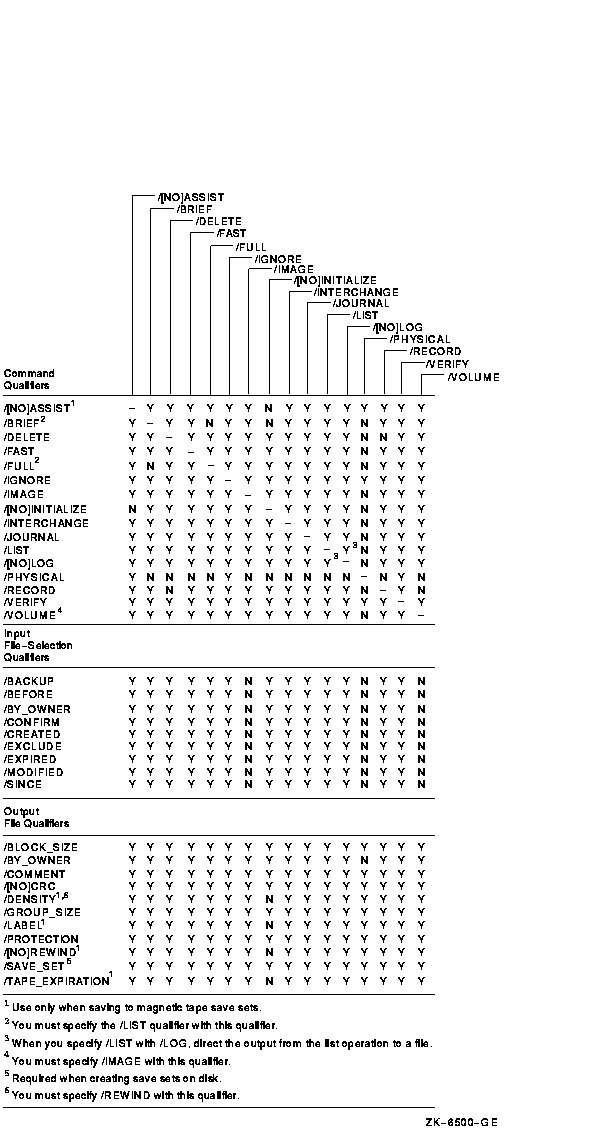
Figure G-2 Input File-Selection Qualifiers Used in Save Operations
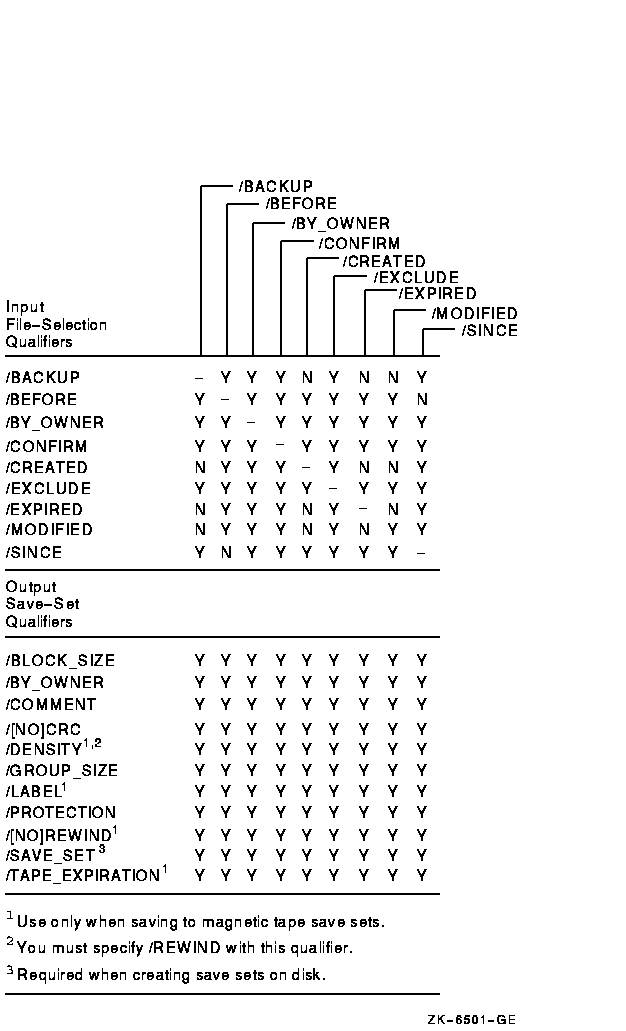
Figure G-3 Output Save-Set Qualifiers Used in Save Operations
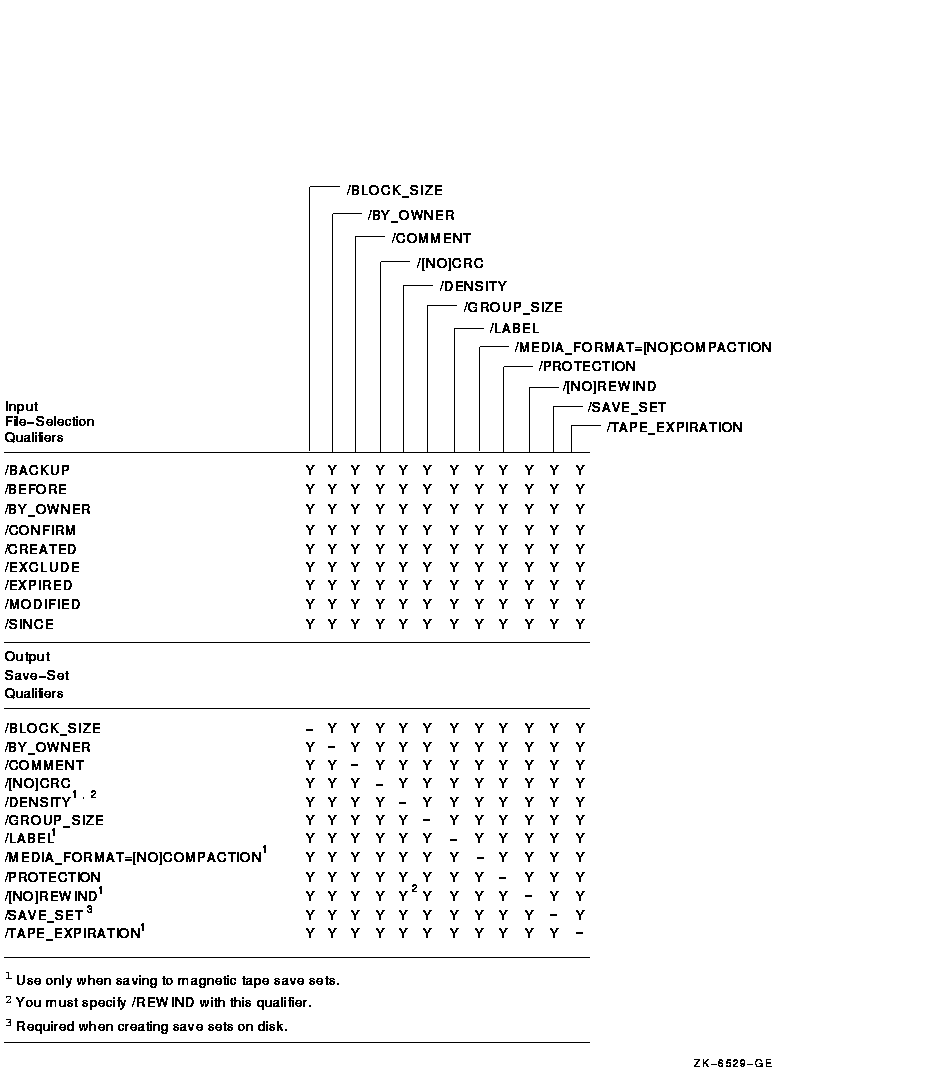
Figure G-4 Command Qualifiers Used in Restore Operations
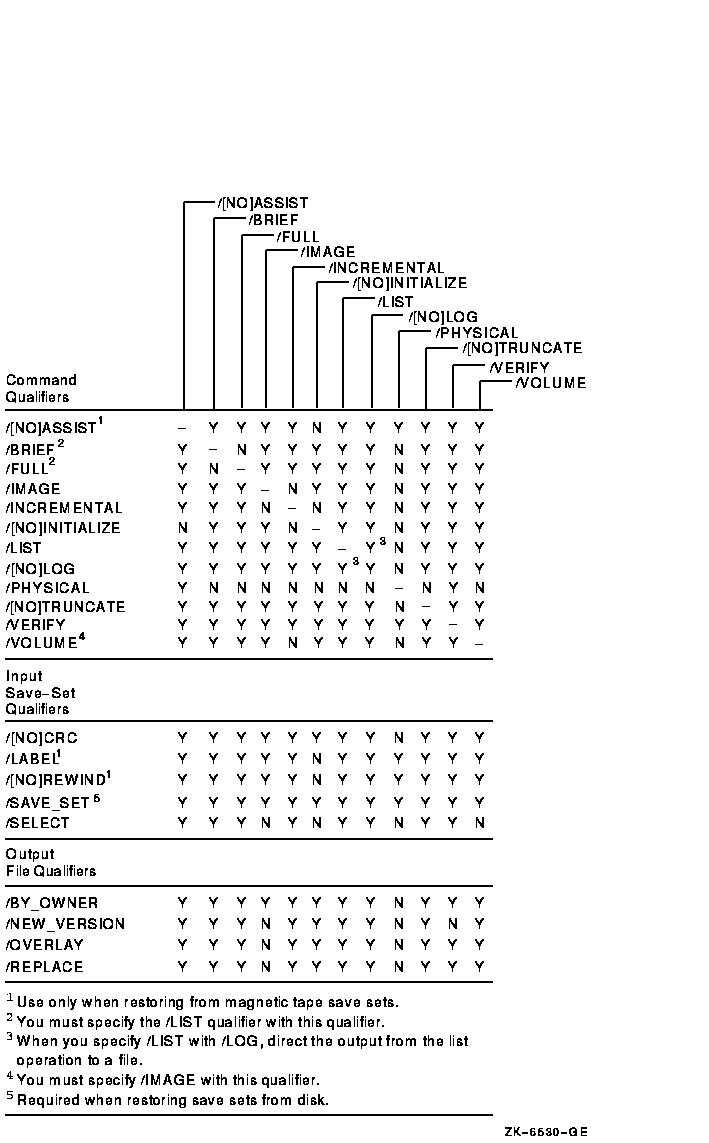
Figure G-5 Input Save-Set Qualifiers Used in Restore Operations
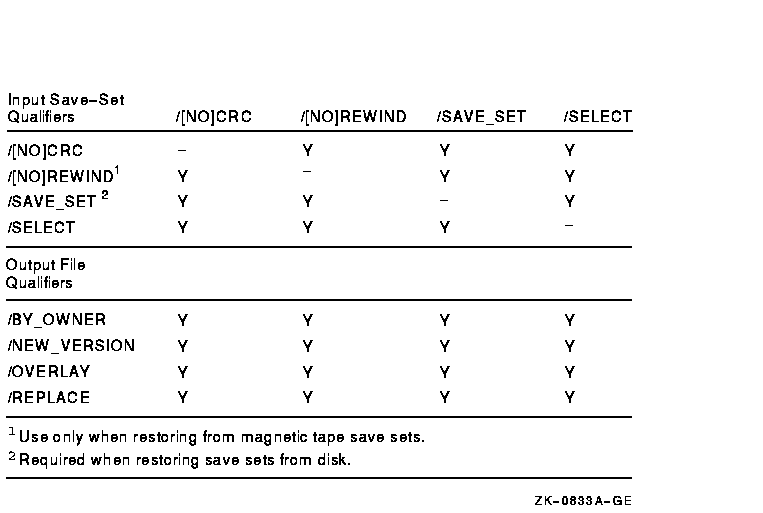
Figure G-6 Output File Qualifiers Used in Restore Operations

Figure G-7 Command Qualifiers Used in Copy Operations
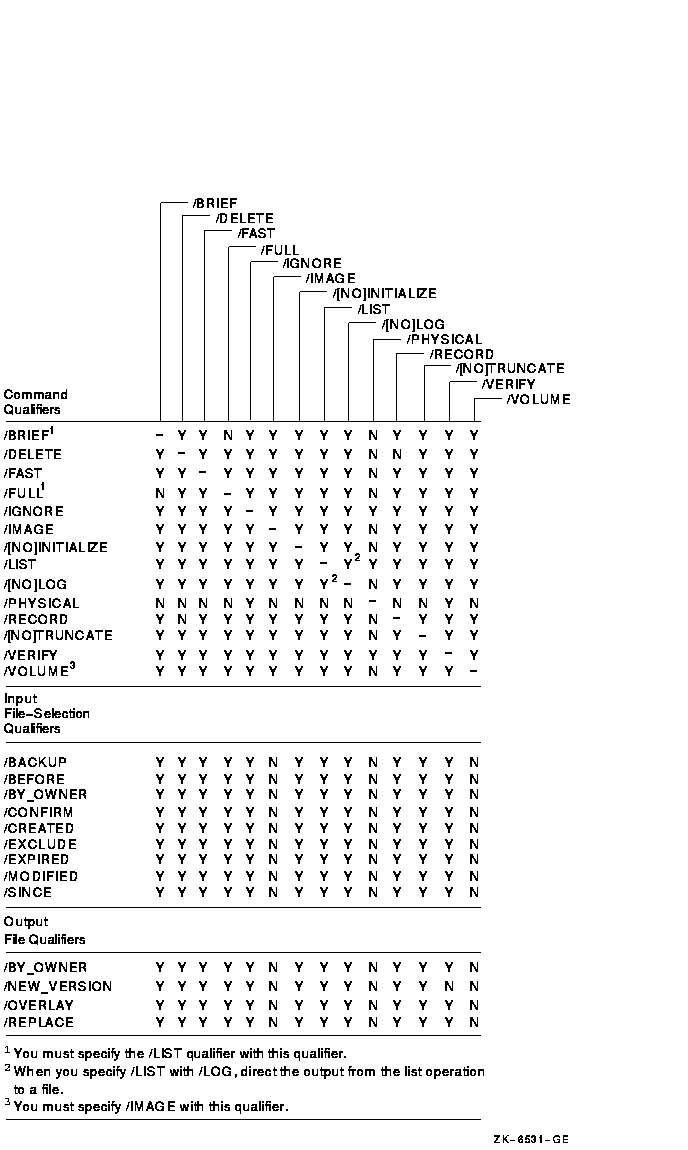
Figure G-8 Input File-Selection Qualifiers Used in Copy Operations
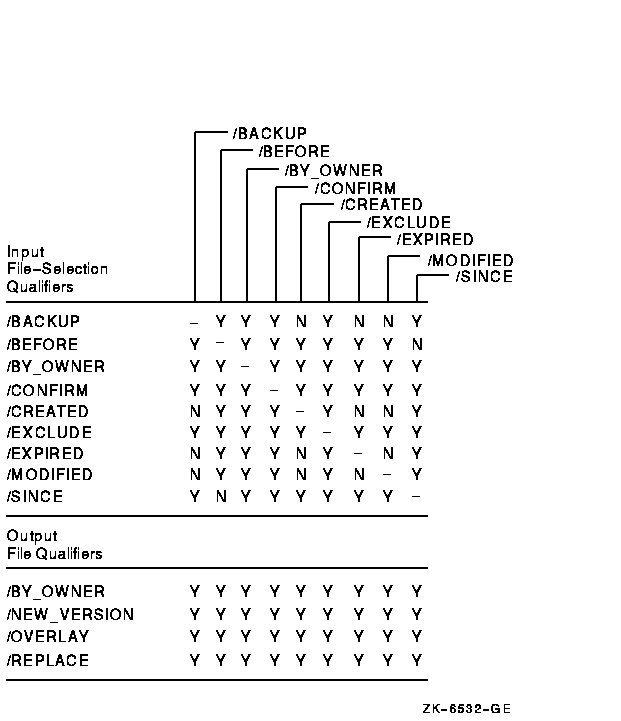
Figure G-9 Output File Qualifiers Used in Copy Operations
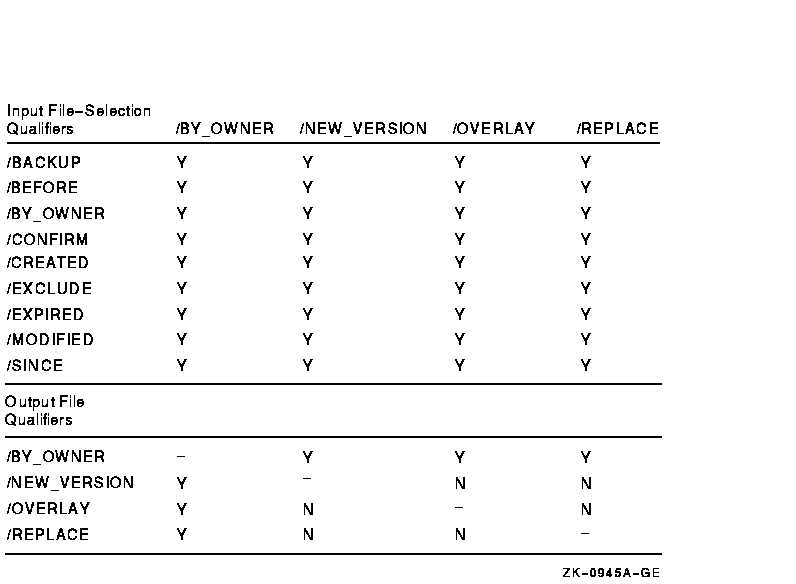
Figure G-10 Command Qualifiers Used in Compare Operations

Figure G-11 Input File-Selection Qualifiers Used in Compare Operations
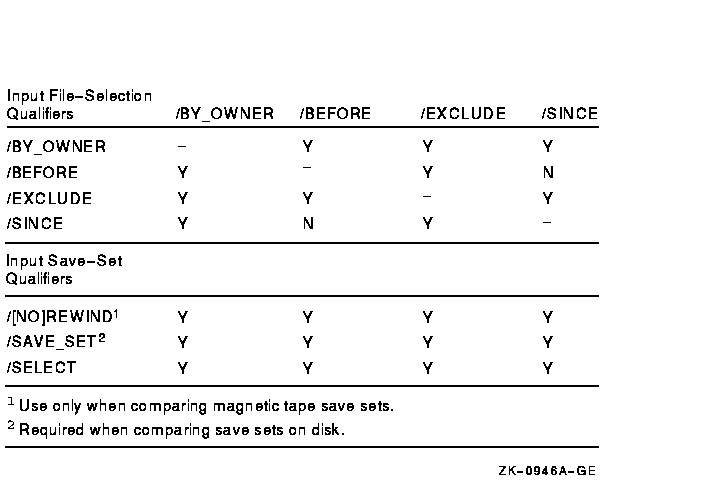
Figure G-12 Input Save-Set Qualifiers Used in Compare Operations
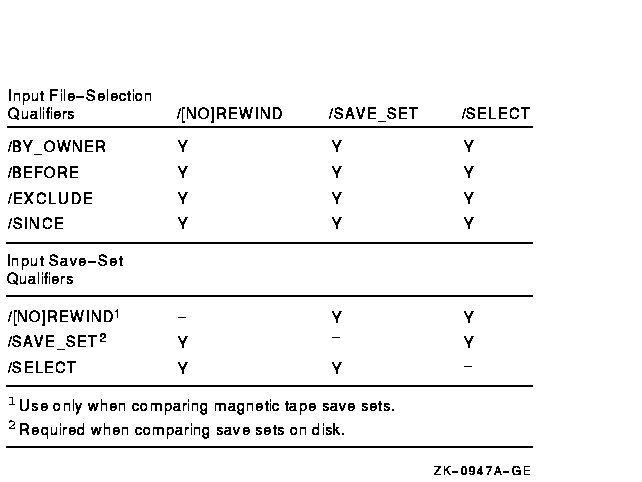
The following sections describe the MONITOR record formats.
H.1 The MONITOR Recording File
Binary performance data is written into the MONITOR recording file when a MONITOR request indicates recording. A record is written to this file once per interval for each requested class. The record contains a predefined set of data for each of the requested performance classes.
![[HR]](../../IMAGES/REDBAR.GIF)
6048P061.HTM OSSG Documentation 26-NOV-1996 12:43:54.11
Copyright © Digital Equipment Corporation 1996. All Rights Reserved.